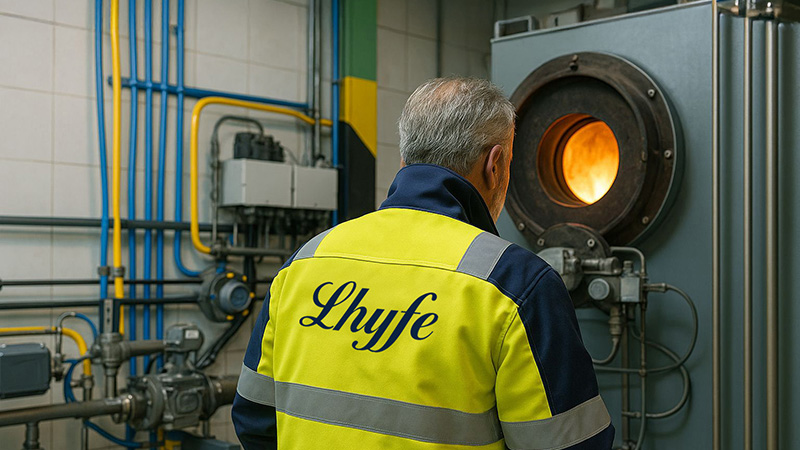
Green hydrogen is ready for use in “many industries” that use natural gas for high-temperature combustion, a producer has claimed, after tests showed it could be swapped in with just a simple change.
French green hydrogen pioneer Lhyfe announced it had taken a “significant step forward” with the first tests of green hydrogen combustion as a replacement for fossil gas in ceramics production.
Combustion of fossil fuels – mainly natural gas – is used in industries including ceramic, glass and steel to reach the high temperatures (400-1,550ºC) required by their processes. Like many energy-intensive sectors, those industries are seeking to reduce their carbon intensity, but finding a straightforward switch has not been easy.
Unlike natural gas, burning green hydrogen – which is produced using clean power – emits no carbon dioxide.
Lhyfe delivered three tonnes of the fuel, produced at a facility in Haute-Garonne, France, to a ceramics producer in Valencia, Spain. Combustion tests at the company involved gradually replacing natural gas with green hydrogen, going from zero to 100%. The tests were successful and only required the burners to be changed, Lhyfe said, paving the way for its use in other industries.
“These combustion tests, using up to 100% green hydrogen, represent an important milestone for Lhyfe, which is thus supporting the first trials to decarbonise manufacturing processes in an industry that consumes a lot of fossil gas,” said industry manager Frédéric Naudi. “We can now deploy this system in many industries that burn fossil fuels.”
The successful test does not mean that widespread deployment is imminent, however. Less than 1% of hydrogen production in 2023 was low-emission (also including blue hydrogen, produced from natural gas with carbon capture), according to the International Energy Agency (IEA).
Challenges include the high cost of production, with green hydrogen costing one-and-a-half to six-times more than unabated fossil-based production, according to the IEA. Wider use of hydrogen will also depend on massive expansion of storage, transport and distribution infrastructure.
Want the best engineering stories delivered straight to your inbox? The Professional Engineering newsletter gives you vital updates on the most cutting-edge engineering and exciting new job opportunities. To sign up, click here.
Content published by Professional Engineering does not necessarily represent the views of the Institution of Mechanical Engineers.




